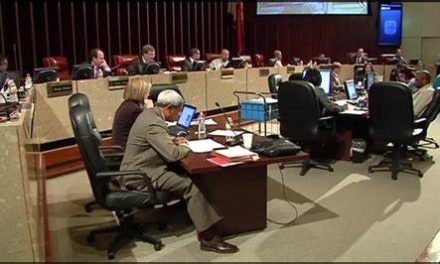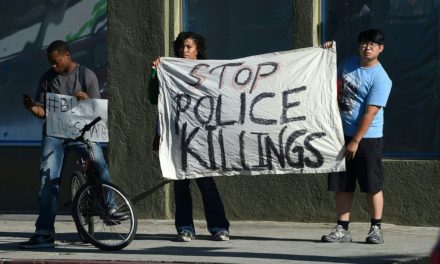From the Infrastructurist, a guest Peter Kageyama, author of ‘For the Love of Cities.’
In January of this year, Newsweek published its list of “America’s Dying Cities.” The story declared that these were cities “with bleak futures ahead.” Not surprisingly, the list contained many cities that have struggled in past decade, losing both population and industry:
10. Grand Rapids, Michigan
9. Flint, Michigan
8. South Bend, Indiana
7. Detroit, Michigan
6. Pittsburgh, Pennsylvania
5. Cleveland, Ohio
4. Rochester, New York
3. Hialeah, Florida
2. Vallejo, California
1. New Orleans, Louisiana
What this list really reflects, however, is the bias and nature of our measures of progress and economic growth. If you are not growing by the traditional definitions, then you are dying. In this case, dying was essentially defined as losing population overall, with particular attention paid to the under-18 demographic.
This under-18 measurement is highly problematic – a recent USA Today analysis of the 2010 census found that 95% of U.S. counties lost population in the under-18 demographic. Overall, the under-18 population remained relatively static despite an overall 9.7% growth in total U.S. population. Households with children dropped from 36% in 2000 to 33.5% in 2010. To find the areas that have gained population in the under-18 group, “all you have to do is look for Latino immigrants. They are the only group in the U.S. that is producing children above replacement rates” said Kevin Stolarick, Research Director for the Martin Prosperity Institute in Toronto.
Yes, population loss is a metric that needs to be tracked and measured — but it should not be equated with death. If that were simply the case, Chicago would be a dying city, since it lost nearly 7% of its population from 2000 to 2010. As human beings we stop “growing” in our early 20s, yet we hardly think of a 25-year-old as dying — still, at a cellular level, they are dying in the same way that these cities are dying.
Losing population is not the same as losing hope, losing purpose, or losing life. As such, to call these cities “dying” requires looking at them in a very one-dimensional way.
Let’s look at a few other views. New Orleans, the #1 dying city according to Newsweek, has become a hotbed of social innovation, entrepreneurship and development. Record numbers of educated young professionals have flocked to the Crescent City since Katrina in 2005. Forbes magazine and author Joel Kotkin listed New Orleans as the #1 “brain magnet” city ahead of such luminaries as Raleigh-Durham and Austin. In April of this year, Inc. Magazine called New Orleans “the coolest start up city in America” and noted that the numbers of entrepreneurs and start-ups was significantly higher than the national average and more than double the pre-Katrina stats. The overall population numbers have decreased, yes — but one needs to look at the quality and nature of those that have moved into the city to see that New Orleans is far from dying.
So too with Pittsburgh (#6 on the list) which has seen a remarkable turnaround from post-industrial rust belt city into America’s “most livable” city, according to the Economist’s latest research.
And even Detroit needs closer examination than a cursory look at the broad numbers. While the overall population figures for Detroit were down over 25% from the 2000 census, they also held some significant positives. The overall population of Detroit’s city center grew by 59%, with more than 2000 people added, the vast majority of whom are educated and young. Detroit is being reshaped by a small but growing number of urban champions who see it as a frontier town filled with opportunities and strange beauty.
Pronouncements such as the Newsweek list are both helpful and hurtful to these communities. To most casual observers, they’re harmful because they reinforce the most commonly-held stereotypes and beliefs about an urban area. They perpetuate the negative self-images that are so difficult to escape from. But if managed correctly, rankings like these can also help cities — they can rally them, highlight their problems, and force communities to look critically at themselves.
A fantastic example of a community taking the negative by the horns and turning it into a community development opportunity comes from Grand Rapids, Michigan. Number 10 on the Newsweek list, Grand Rapids responded in creative kind with the world’s largest “lip dub” in May of 2011 (a lip dub is a continuously shot video of people lip synching to a song). The Grand Rapids lip dub involved over 5,000 people, and necessitated the closing of downtown for an entire day as the amazing video was shot. The project was produced by event guru Rob Bliss, the man behind a world-record-breaking zombie walk in Grand Rapids, as well as a 500-foot waterslide and 100,000 paper airplanes in downtown Grand Rapids over the past couple of years. Bliss brilliantly taps into the creativity and fun within his community to produce events that create immensely lovable moments that bind people to their place.
“We disagreed strongly (with Newsweek), and wanted to create a video that encompasses the passion and energy we all feel is growing exponentially, in this great city. We felt Don McLean’s “American Pie,” a song about death, was in the end, triumphant and filled to the brim with life and hope” said Rob Bliss, Director & Executive Producer of the event.
The lesson for cities everywhere is to expand their definitions of growth, progress, and of what success looks like to them. Using someone else’s yardstick usually leaves you coming up short and feeling like you failed. Creating your own success metrics is not cheating especially when you then challenge yourselves to meet and exceed those measures. Communities that look deeper will likely find surprising vitality and opportunities in unexpected places and perhaps change what the world believes about them and more importantly, what they believe about themselves.





Fast Company has a great article on using infrastructure to “take the negative by the horns and turn it into a community development opportunity” http://www.fastcodesign.com/1664082/how-to-redesign-public-infrastructure-to-save-the-environment-and-cash-video.
A lot less fun than a group lip-synch, but doable by many of the cities on the list, as well as Memphis.
Thanks, Sarah B. Great link.